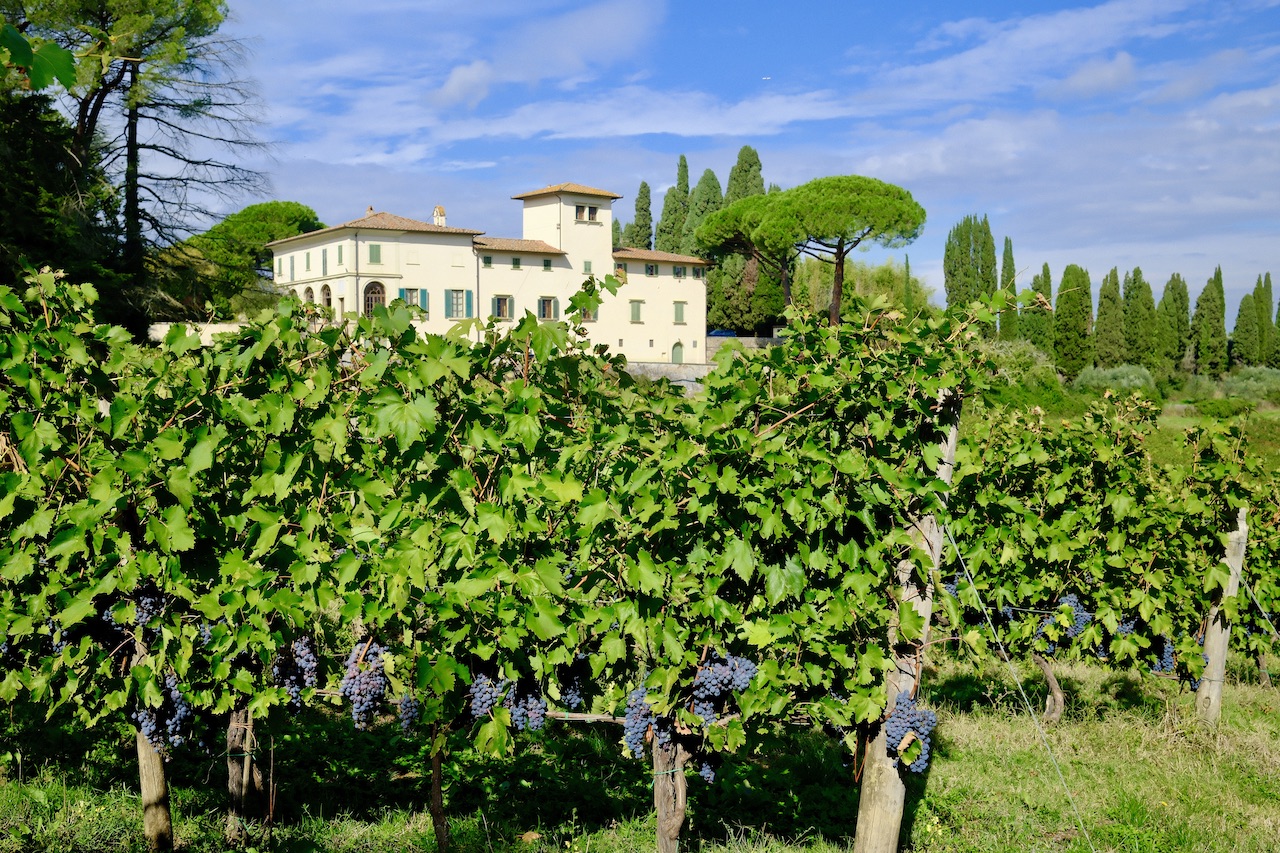Wine Tours in Tuscany - About Angie - +39 3333185705 - angie.chianti@gmail.com
Guests on our wine tours from Florence are often surprised to learn that local winemakers sometimes use Cabernet Sauvignon grapes in Tuscan wine.
How did a grape that originated in France make it into quintessential Tuscan wines, like Chianti?
In fact, Cabernet Sauvignon grapes are grown all over the world. They became fashionable in Tuscany when innovative winemakers put a uniquely Italian spin on Cabernet. That launched a new era for Tuscan wine.
The story of “Italian Cabernet Sauvignon”
Sangiovese grapes have always been the primary grape in Chianti. To get a DOC designation, winemakers must adhere to strict regulations on the grapes they use.
But in the 1970s, winemakers in the Bolgheri region became famous for breaking the rules. They wanted to make more creative blends using different kinds of grapes. Given that the stony soil in Bolgheri is similar to Bordeaux, they planted Cabernet Sauvignon grapes. That’s how the first blend of Sangiovese and Cabernet was born. Known as Tignanello, it was the first “Super Tuscan” wine – – a style of full-bodied wine made from non-indegenous grapes.
The Bolgheri winemakers wanted to go further with their idea of producing an Italian Cabernet wine. In 1974, their creation, Sassicaia, won an event hosted by Decanter Magazine, beating out many wines from Bordeaux. Sassicaia was made from 85% Cabernet Sauvignon grapes grown in Italy. It was the start of a wine renaissance that put Super Tuscan wines on the map.
The flavors of Cabernet Sauvignon in Italy
Naturally, Cabernet grapes grown in Tuscany are influenced by the region’s special terroir. In Bolgheri, breezes from the Ligurian Sea help to encourage higher acidity and greater aromatic complexity.
Cabernet Sauvignon characteristics include aromas of black currant, blackberry and jasmine. As it ages, it becomes richer in tannins with the taste of tobacco, cedar or tannins. Chianti Classico wines with added Cabernet develop smooth, dark and velvety notes of blueberry and black cherry. Under today’s regulations, 20% of a Chianti Classico can come from grapes other than Sangiovese. For a Chianti DOCG, it’s 15%.
For the Super Tuscans, anything goes. As an example, this robust Super Tuscan from the Le Fonti winery between Florence and Siena is 100% Cabernet Sauvignon.
The best Super Tuscans are aged in French-style oak barrels, called barriques, This adds aromas of vanilla and spice to the rich berry flavors. Like a fine Bordeaux wine, these high-quality Italian Cabernets can age for more than a decade.
Taste them for yourself on our most popular Chianti and Super Tuscan wine tour from Florence. If you’d like to try Super Tuscans in the picturesque Bolgheri region, this private tour from Florence is for you.





